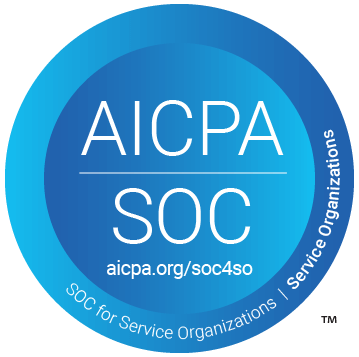Table of Contents
Support Guide
10DLC Phone Number Registration
-
Chloe Larson

What is 10DLC?
10DLC is an acronym that stands for 10-digit long code, and 10DLC registration means that your number is registered through a third-party organization called The Campaign Registry (TCR). It's a process designed to ensure a positive and secure consumer experience and protect the performance of your text campaigns.
10DLC is the new standard for A2P (application-to-person) text messaging in the US, which applies to all SMS and MMS messages over 10 digit geographic phone numbers, also known as “Long Codes.” Major US carriers have announced their requirements for A2P messaging using 10 digit local US phone numbers, also known as 10 DLC. This new standard provides many benefits to our users including supporting higher messaging speeds and better deliverability.
Below are some helpful terms that are used often in this guide for additional context and clarity:
1. A2P
A2P stands for Application-to-Person messaging. A2P signifies businesses utilizing applications or software to send text messages to consumers at scale. Essentially, it’s the technical term for business texting, integrated texting, or SMS (short message service).
2. Short Code
Shorts code refers to a five or six-digit phone number for A2P messaging, ex. 31313. These numbers are easily memorable and boast high throughput (speed, measured in messages sent per second), making them ideal for high-volume text campaigns where prompt delivery is paramount. SMS short codes support multimedia messaging (MMS) and delivery receipts but do not accommodate voice services.
3. Toll-free number
Toll free numbers start with 800 instead of a typical area code. There are no associated fees, but the 800 prefix can deter consumers, and these numbers are frequently restricted by messaging caps and spam filters applied by carriers.
4. 10DLC
10DLC is an acronym that stands for 10-digit long code and is the new standard for A2P (application-to-person) text messaging in the US. 10DLC applies to all SMS and MMS messages over 10 digit geographic phone numbers, also known as “Long Codes.” Major US carriers have announced their requirements for A2P messaging using 10 digit local US phone numbers, also known as 10DLC.
5. TCR
TCR refers to a third-party organization called The Campaign Registry (TCR). When you register for 10DLC, the TCR verifies that your business is legitimate, then ultimately approves or rejects your 10DLC registration.
Why is 10DLC Important?
For customers sending application-to-person (A2P) text messages (SMS and MMS) in the United States with a local number— excluding toll-free — requires you to register your business and use cases with telecommunications carriers. Not registering for 10DLC can lead to a lack of deliverability with texting and texts being blocked by carriers all together as of 8/31/2023.
1. Higher Response Rates
Consumers tend to find local numbers more trustworthy and familiar. Additionally, 10DLC facilitates two-way text messaging and supports various media types, contributing to increased response and engagement rates from consumers.
2. Greater deliverability
Each 10DLC number receives a reputation score from TCR, used by mobile carriers to prioritize messages. A higher reputation score enhances deliverability. Conversely, unregistered numbers may encounter spam filters, delayed message sending, and potentially blocked traffic.
3. Higher message throughput
Throughput is the measure of messages per second (MPS). Greater throughput allows for sending more messages simultaneously and on schedule.
The throughput you experience depends on your trust score, with 10DLC numbers generally offering higher throughput compared to traditional long code numbers.
4. Flexibility
Short codes are limited to texting, whereas long code numbers allow for text, MMS, and voice, enabling the use of a single number for diverse messaging strategies such as appointment reminders, marketing campaigns, notifications, and more. This versatility makes long codes a scalable and flexible solution.
Note: Starting July 5, 2023, all mobile carriers are going to start ramping up penalties for unregistered numbers, and on August 31, 2023 they will block texts from unregistered 10DLC numbers altogether.
What information is required for registration?
Below is a short breakdown of what TCR registration asks for when registering for 10DLC. For a more advanced breakdown, refer to the following registration guidelines:
1. Tax details
- DBA/brand name
- IRS-issued EIN or TID
2. Organization details
- Business type (LLC, sole proprietor, or corporation)
- Industry and business type (non-profit, public, private, government)
3. Contact details
- Organization address
- Primary contact info
- Organization website URL
4. Campaign details
- Types of messages you’ll be sending
- Sample messages
- Proof of how people gave consent to receive messages from your business
How to register for 10DLC

To begin the 10DLC registration process, you'll need to share necessary information outlined in the registration form through Shape and our dedicated team will then handle the application submission. The process involves a one-time registration fee of $94 and a $25 recurring monthly campaign fee.
For successful registration approval, it's crucial to ensure thorough verification of your business information and strict adherence to industry standards outlined in the Telephone Consumer Protection Act (TCPA). These standards encompass various requirements, some of which are:
- Securing explicit written permission from consumers before sending them text messages.
- Providing opt-out instructions in the initial text of every campaign.
- Identifying your company name in the first text of any campaign.
- Having SMS terms and conditions and an SMS privacy policy displayed on your website.
Step by Step Instructions for Registering in Shape
Below is a short breakdown of what TCR registration asks for when registering for 10DLC. For a more advanced breakdown, refer to the following registration guidelines:
1. Go to Settings > Phone Settings
Get here by clicking on “Settings” in the navigation bar and navigating to “Phone Settings” on the left hand sidebar, or clicking the link below. Phone settings: https://secure.setshape.com/manage-call-settings
2. Click on the “Register for 10DLC” button
Each 10DLC number receives a reputation score from TCR, used by mobile carriers to prioritize messages. A higher reputation score enhances deliverability. Conversely, unregistered numbers may encounter spam filters, delayed message sending, and potentially blocked traffic.
3. Enter a sample message in the appropriate field
For sample messages, enter messages that are likely to be sent from your business. We have included samples below:
Sample Message 1: Hi {Customer Name} this is {Rep Name} from {Company Name} following up on your recent inquiry. Thank you for considering us! Someone will be in touch shortly. Reply STOP to opt-out or HELP for more info.
Sample Message 2: Hi {Customer Name}, thanks for applying with {Company Name}! We are currently reviewing your information and will get back to you as quickly as possible. Reply STOP to opt-out or HELP for more info.
4. Once submitted, your "Register for 10DLC" button will updated to "Registration Pending"
Once registered, you will not need to register in the future, each phone number you add after registration will automatically be enrolled, and the registration fee + monthly fees will be billed directly.
Common Rejection Reasons
Below are common rejections given by carriers for 10DLC registrations:
- Opt-in language is required on the website if used to collect mobile numbers
- The opt-in language needs to be present on each form that is used to collect phone numbers.
- The Tax ID does not match the company name or the business type
- Website providing 3rd party loans by sharing user information, which is prohibited
- The website does not have an About Us, Terms and Conditions or Privacy Policy sections
- High-risk financial services such as payday loan offers, education loan offers, third-party auto and mortgage loan offers, and cryptocurrency
- Debt collection, debt relief/restructuring/refinancing, and credit repair offers
- Unsolicited insurance quotes
- Work-from-home job offers, including pyramid schemes
- Third-party lead generation services
- Illegal prescriptions, gambling, or other campaign types that are not in compliance with CTIA messaging principles and best practices
Best Practices for Company Website
Carriers thoroughly review your business website URL that you submit with your 10DLC registration checking for Opt In Compliance, Terms and Conditions, and Privacy Policy. Below we have listed best practices for 10DLC approval and updates that can be made to your website to improve your chances of approval for your 10DLC campaign.
1. Opt in Verbiage
Opt in language is required on the website if used to acquire mobile numbers. Most commonly, this is found on the “Contact Us” page where the customer can enter their Name and Contact Info into a webform.
You will want to ensure that you have opt in verbiage on the webform letting the customer know that they are giving their consent to receive SMS traffic as well as links to the Privacy Policy, Terms of Use, Message Frequency, Data Rates, etc.
2. Terms of Service
Typically, most websites have a “Terms of Service” or “Terms & Conditions” page. What carriers look for are specifically related to terms of service related to 10DLC texting compliance. Below are some examples of the language that carriers usually look for on a terms of service page:
Messaging Frequency and Charges Disclosure
“By providing your phone number and opting in, you consent to receive text messages from [Your Company Name] regarding our products, services, and promotions. Standard messaging and data rates may apply.”
Messaging Frequency:
“You can expect to receive messages from us [describe the frequency, e.g., “occasionally,” “weekly,” “monthly,” etc.].”
Charges:
“Message and data rates may apply depending on your mobile carrier plan. If you have any questions about your plan or charges, please contact your mobile carrier.”
3. Privacy Policy
For the privacy policy, most companies create a section titled “Non-Disclosure Clause” somewhere under or within the section that discusses communication terms and include the following sentence:
“Subscriber information will not be shared or sold to 3rd parties for their direct marketing purposes.”
Frequently asked questions
My customers are reporting that they did not receive my texts
This is most likely due to the lack of 10DLC registration. As of April 24th, if your company is not registered for 10DLC, carriers will not deliver your messages. 10DLC is the new standard for A2P (application-to-person) text messaging in the US, which applies to all SMS and MMS messages over 10-digit geographic phone numbers, also known as “Long Codes.” Shape has been at the forefront of 10DLC ensuring our customers have a simple process in place to avoid any disruptions in their SMS communications efforts.
Do I need to register again if I add a new phone number?
No! Once registered, all of your Shape phone numbers will be covered, even numbers you add after enrolling up to 49 phone numbers!
Is registering with 10DLC mandatory?
While not mandatory, it is necessary if you are sending bulk communications from Shape to customers to increase your deliverability odds.
Will 10DLC stop my numbers from coming up as spam when calling?
It will not! 10DLC is specifically for texting deliverability and does not affect calling.
If you number has been flagged as spam by carriers, we recommend replacing the flagged number with a new number from our provider.
Can I use a toll-free number as an alternative?
If a local area code is not necessary, you can consider using a toll-free number as an option. Both toll-free and short code numbers require mandatory registration and verification processes. Due to the ongoing increase in 10DLC registrations, the waiting period for toll-free numbers could be shorter.
When it comes to delivery rates and throughput, it’s important to note that toll-free numbers may still be affected by spam filters and message limits.
How long does 10DLC registration take?
Right now due to a high number of registrations, it’s taking 4-6 weeks for carriers to review submissions.

